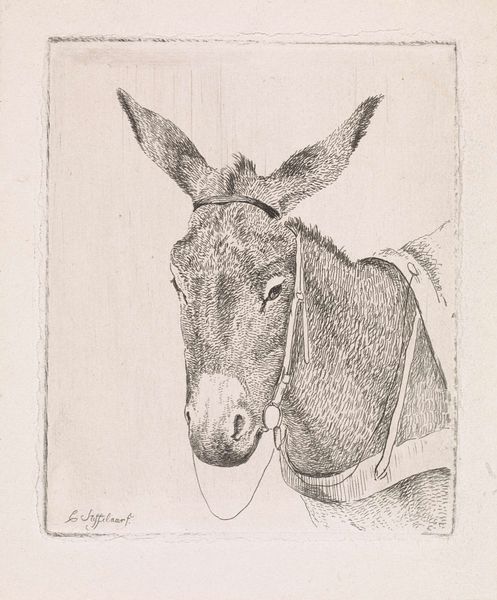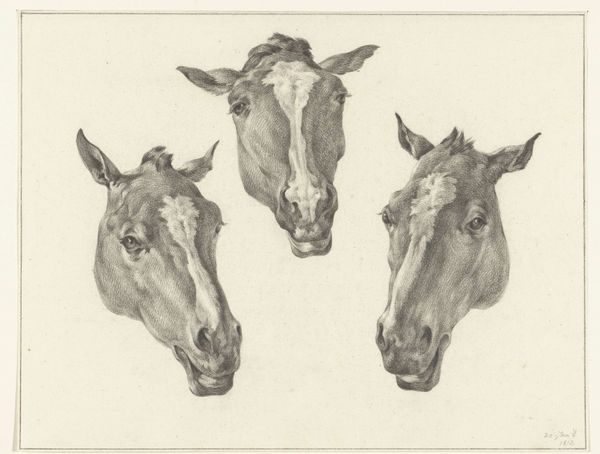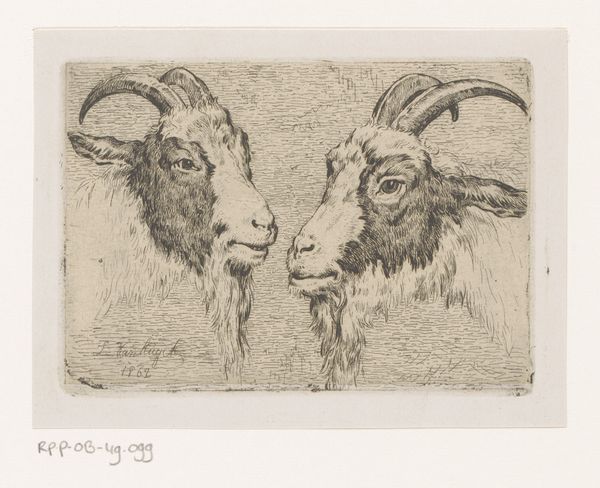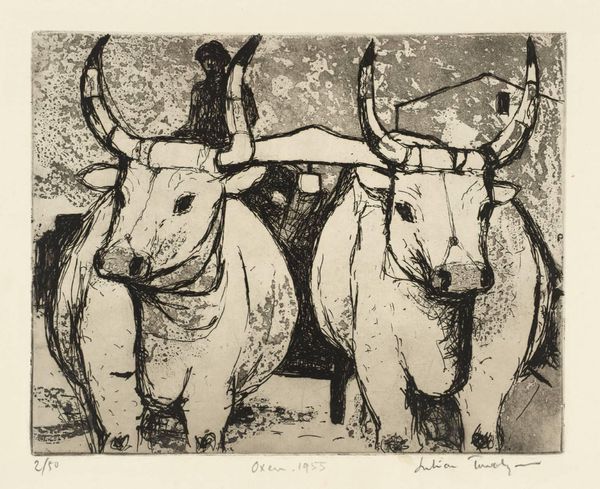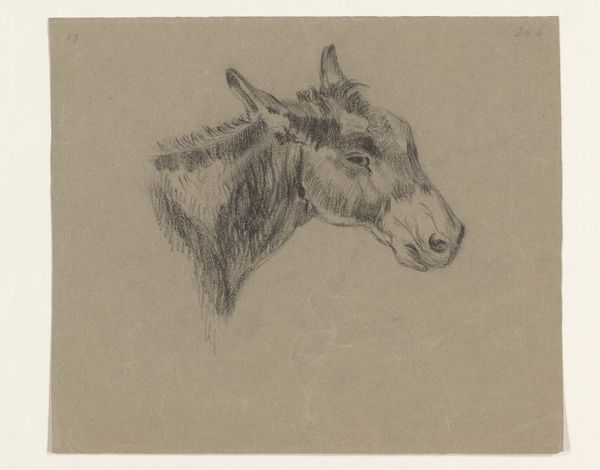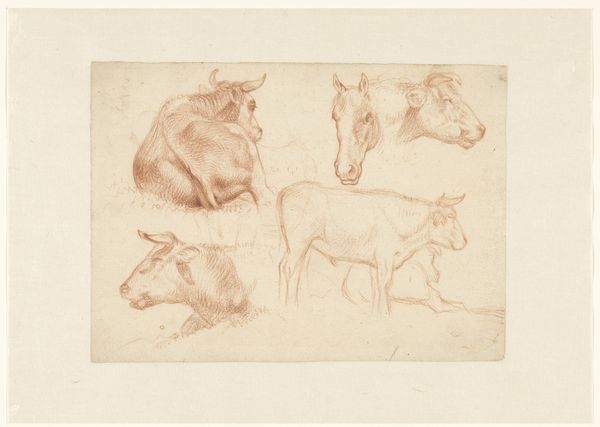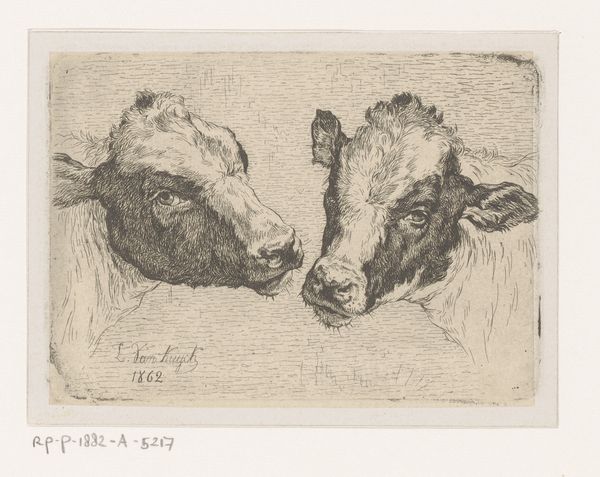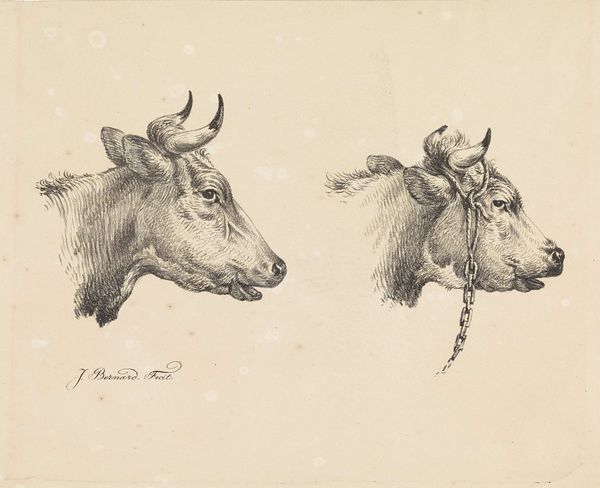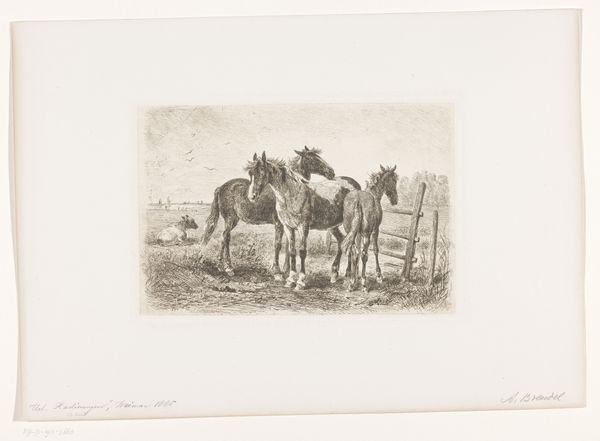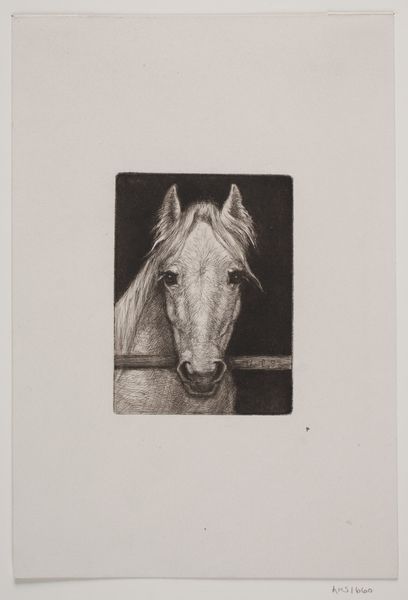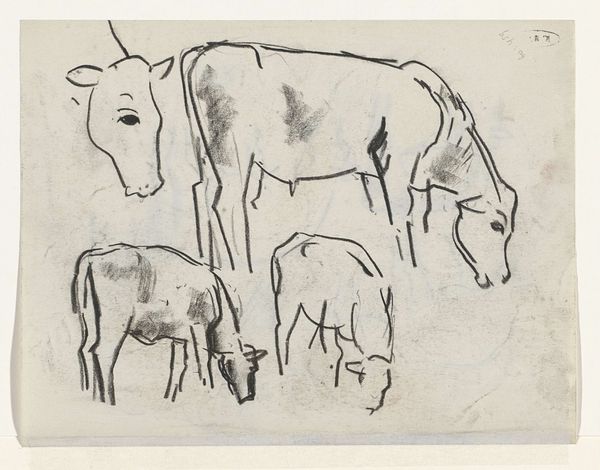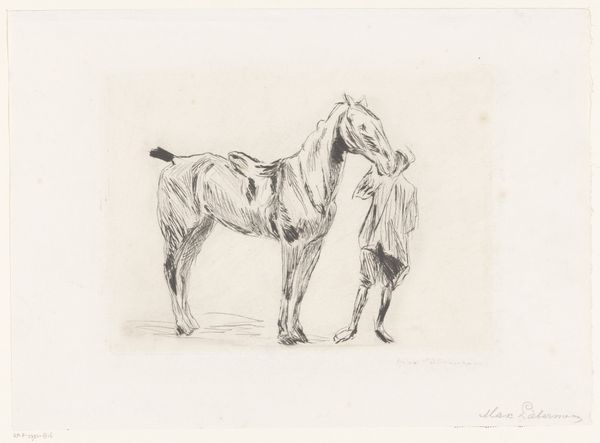
print, etching
#
portrait
# print
#
etching
#
animal drawing portrait
#
realism
Dimensions: 138 mm (height) x 193 mm (width) (plademaal)
Curator: Right now, we're looking at Otto Haslund's "Tre æselhoveder," or "Three Donkey Heads," an etching from 1874 held here at the SMK. It's quite a charming piece. Editor: It’s curious…almost claustrophobic. They’re so close together, these three donkeys, packed into this little frame. And yet, there's a gentleness to it. Curator: Absolutely. Haslund seems fascinated with their shared presence. Donkeys throughout history have shouldered heavy burdens, symbolic carriers of the peasant class in art and literature, right? Yet here, Haslund avoids political caricature. Editor: Yes, there is a deep history there. Donkeys are loaded with meaning from stubbornness to humility. How interesting that Haslund steps away from a commentary about rural Danish life, considering its prominent role in art of the time. Curator: Exactly! Instead of leaning into these readily available tropes, the close composition creates a more intimate feeling. Haslund explores empathy by drawing attention to the gaze of these creatures. Editor: The level of detail he achieves in this etching is wonderful. The texture of their fur, the way the light catches in their eyes—it feels very…real. I think the lack of a deeper narrative shifts the symbolic focus away from simple representations of class struggle towards something more nuanced. Curator: Indeed, that naturalism, the specific rendering of each donkey's face, contributes to the work's emotive power. There's a quiet dignity conveyed in these animal portraits. It raises questions about how we attribute qualities of humility, obstinacy or virtue. Editor: It reminds us that visual symbols never really detach themselves completely from historical contexts. Haslund has allowed these familiar images to challenge us, though. Curator: A quiet subversion. As the print medium allowed for the mass circulation of images, and facilitated public debate around identity, maybe this speaks to an evolving idea of how we see the “common” animal and human experience. Editor: It certainly offers a glimpse beyond the familiar symbols, doesn't it? Curator: Yes, making us reconsider simple ways of categorizing people and animals as icons of folk wisdom.
Comments
No comments
Be the first to comment and join the conversation on the ultimate creative platform.
